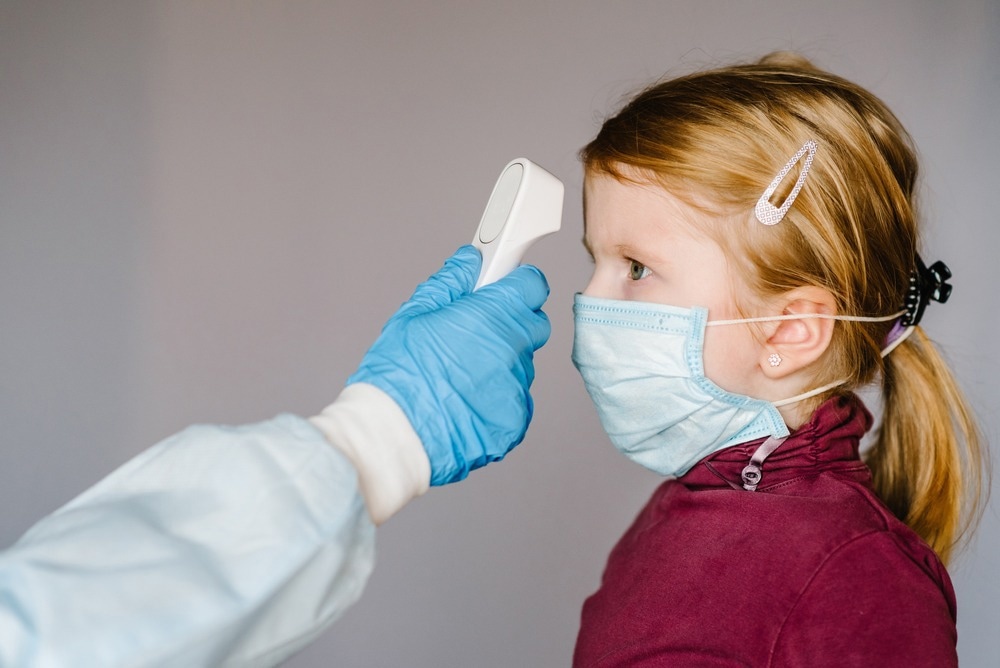Temperature sensors, often referred to as thermal sensors, measure temperature changes reflected by changes in the electrical signal production of the sensor material. In addition to healthcare applications, thermal sensors are incorporated into vehicles, heating, ventilation, and air conditioning (HVAC) systems, power and utility industries, renewable energy systems, heat exchangers, drilling, laboratory equipment, and more.
In healthcare settings, there are various different types of temperature sensors, some of which include thermocouples, resistance temperature detectors (RTD), thermistors, thermometers, infrared (IR) sensors, and semiconductor thermal sensors.
RTD sensors
An RTD sensor consists of a resistance element and between two and four insulated copper wires. Typically, the resistive element within the sensor is platinum due to its long-term stability; however, copper and nickel may also be used.
Regardless of which element is used, as its temperature increases, its resistance to the flow of electricity also rises.
The electrical resistance value, which is measured in Ohms, is then converted into the appropriate temperature based on the element used within the sensor.
Within healthcare settings, RTD sensors may be found in autoclaves and other sterilizing equipment that are used to kill any pathogens, such as bacteria or viruses, from medical devices.
Thermistors
Thermistors consist of metallic oxides, binders, and stabilizers, all of which are compressed into wafers that are then manipulated to either be chip-sized-, remain in a disc form, or into another shape.
Thermistors can be categorized as either negative temperature coefficient (NTC) thermistors or positive temperature coefficient (PTC) thermistors. When the temperature increases, the NTC thermistor resistance will decrease, whereas the PTC thermistor resistance will increase. Importantly, NTC thermistors are more frequently utilized for temperature measurement.
NTC thermistors are one of the most versatile temperature sensors used for patient monitoring due to their high accuracy, durability, interchangeability, and cost-effectiveness. Thermistors can be found in skin, rectal, esophageal, and catheter temperature probes.
IR sensors
Although the infrared spectrum can extend to as much as 1,000,000 nanometers (nm), IR temperature sensors typically sense electromagnetic waves within the range of 700 and 14,000 nm.
Within the infrared sensor are photodetectors that convert the IR energy emitted by an object of interest into an electrical signal that is proportional to this emitted energy, which can then be used to determine the temperature of the object.
Compared to thermistors and RTD sensors that must remain in contact with the object to determine its temperature, IR sensors can provide temperature readings for moving objects. This lack of contact between the sensor and objects eliminates any potential friction on the sensor, thus extending the operating life of these sensors.
Throughout the SARS-CoV-2 (COVID-19) pandemic, where healthcare workers were at an extremely high risk of contracting the infection, limiting their contact with infected patients was imperative. As a result, many medical professionals relied upon contactless IR sensors to accurately monitor the body temperature of their patients while protecting themselves and other patients from exposure to the virus.

Image Credit: Sergii Sobolevskyi/Shutterstock.com
Future Outlook for Temperature Sensors
The wearable sensors market is expected to grow exponentially over the next several years, particularly for healthcare applications. In addition to allowing medical professionals to remotely monitor their patients, wearable sensors also offer continuous monitoring that would otherwise not be possible outside of an inpatient setting.
By measuring the differences in the temperature of exhaled and inhaled breath, temperature sensors can provide accurate information on an individual’s breath rate. In one study, researchers mounted a sensor comprised of serpentine-shaped conductive film cables on the nose of an individual to measure changes in the temperature of the inhaled and exhaled air.
Incorporating wearable temperature sensors, particularly those that are flexible and stretchable in nature, into masks has also been proposed. For example, a 2021 Sensors study discussed the development of a mask that is equipped with a thermistor located near the nose that measures temperature changes within the mask.
The electrical signals measured by this thermistor are then transmitted to two long-rate backscattering receivers inside and outside of the mask that allow for all measurements to be transmitted by WiFi to a server.
Although healthcare professionals better understand COVID-19 and how they can protect themselves from contracting this disease, it is inevitable that novel viruses will emerge in the future. Thus, the ability of this type of sensing device could offer an added level of protection to clinicians to safely monitor their patients.
References and Further Reading
The Different Types of Thermal Sensors [Online]. Available from: https://resources.system-analysis.cadence.com/blog/msa2021-the-different-types-of-thermal-sensors.
Chen, X. (2019). Thermometry and interpretation of body temperature. Biomedical Engineering Letters 9(1); 3-17. doi:10.1007/s13534-019-00102-2.
How Does an RTD Work? [Online]. Available from: https://www.variohm.com/news-media/technical-blog-archive/how-does-an-rtd-work-.
Industries [Online]. Available from: https://www.pyromation.com/industries/Medical.aspx.
Thermistors for Medical Applications [Online]. Available from: https://thermalcomponents.com.au/thermistors-for-medical-applications/.
Infrared Temperature Sensors [Online]. Available from: https://www.surecontrols.com/infrared-temperature-sensors/
Lazaro, M., Lazaro, A., Villarino, R., & Girbau, D. (2021). Smart Face Mask with an Integrated Heat Flux Sensor for Fast and Remote People’s Healthcare Monitoring. Sensors 21(22). doi:10.3390/s21227472.
Disclaimer: The views expressed here are those of the author expressed in their private capacity and do not necessarily represent the views of AZoM.com Limited T/A AZoNetwork the owner and operator of this website. This disclaimer forms part of the Terms and conditions of use of this website.